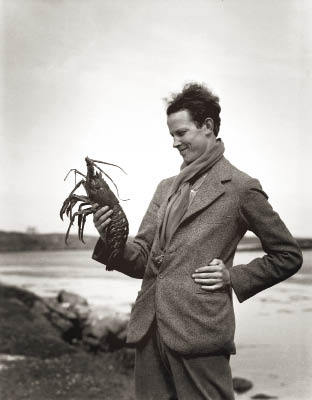I visited the Hebridean island of Canna in May 2008 — Canna being John Lorne Campbell’s island, donated by him to the National Trust for Scotland in 1981 — and was immediately struck by three things, all of which presented a considerable contrast to the island of Colonsay, some little way to the south, where I live.
I visited the Hebridean island of Canna in May 2008 — Canna being John Lorne Campbell’s island, donated by him to the National Trust for Scotland in 1981 — and was immediately struck by three things, all of which presented a considerable contrast to the island of Colonsay, some little way to the south, where I live. There is an excellent natural anchorage; the arable land smacks of fertility, and the massive cliffs, 600 feet high, offer protection from the north.
After a week on Canna, I had come to understand a certain amount about John Lorne Campbell and his legacy, but he was evidently such a private and reserved figure that it required a book of this kind, full of information not previously available, to set the man in perspective.
Nothing in Campbell’s early life (he was born in 1906) was designed to help him get on with people: his parents were neither close nor supportive (they did not attend his coming of age party). His natural shyness, coupled with the formality of the Argyllshire gentry, made him a loner, and his life at Oxford centred round the study of agriculture rather than the kind of parties frequented by Agatha Runcible, with whose world Perman rather surprisingly compares Campbell’s.
He found his direction in a five-year sojourn on Barra, from 1933-38, his time there rendered particularly genial by his friendship with Compton Mackenzie, who inducted him into island democracy, and with a charismatic islander, the Coddy, who taught him Gaelic. During the Barra years he acquired the habit of defending the islanders’ interests — this was the swansong of the herring fishery — and discovered a liking for polemic which he never lost.
At roughly the same time, Margaret Shaw, a small but adamantine woman originally from Pittsburgh, was living in a crofting community in South Uist and beginning the study of folksongs that was to become a lifelong occupation, and one which bound her strongly to Campbell. They married in 1935.
The opportunity to acquire Canna came in 1938: the asking price was £9,000 and Campbell devised a plan to buy it in partnership with Compton Mackenzie. Each would put up half the capital and Mackenzie would live in Canna House, Campbell in the Dower House. This misfired totally (after Campbell’s offer had been accepted) when Mackenzie’s contribution effectively disappeared when his serialisation fee of £5,000 for his book The Windsor Tapestry was scuppered by a change of editor at the Sunday Pictorial. The acquisition of Canna placed Campbell in debt and, like many another before and since, the practical financing of a small island community caused him huge problems, and indeed led to a breakdown. His difficulties were compounded by the uneasiness of ‘distance’ between laird and crofter, the chronic instability of Highland sheep-farming, communication problems, and the freight costs that bedevil all offshore communities. Initially, too, he showed a tendency to employ people who were either dishonest or unsuitable or both.
His stewardship of Canna proved in the end to be more successful than he could have hoped; quite apart from the support provided by his indomitable wife, Campbell’s energy and industry won through. The library and Gaelic recordings at Canna House will probably be the chief reason for which the Campbells will be honoured; the NT for Scotland has now catalogued and made these accessible.
It is no secret — and Perman is admirably clear on this — that the years after the handover were not easy, and it may also be the case that Campbell’s lifelong dislike of bureaucracy did not facilitate dealings with the Chorley generation of NT personnel. Those of us who live in these isolated and beautiful places, described in current jargon as ‘fragile communities at the edge’, can only pay tribute to John Lorne Campbell’s achievement and wish the National Trust for Scotland all possible support in preserving his legacy.






Comments